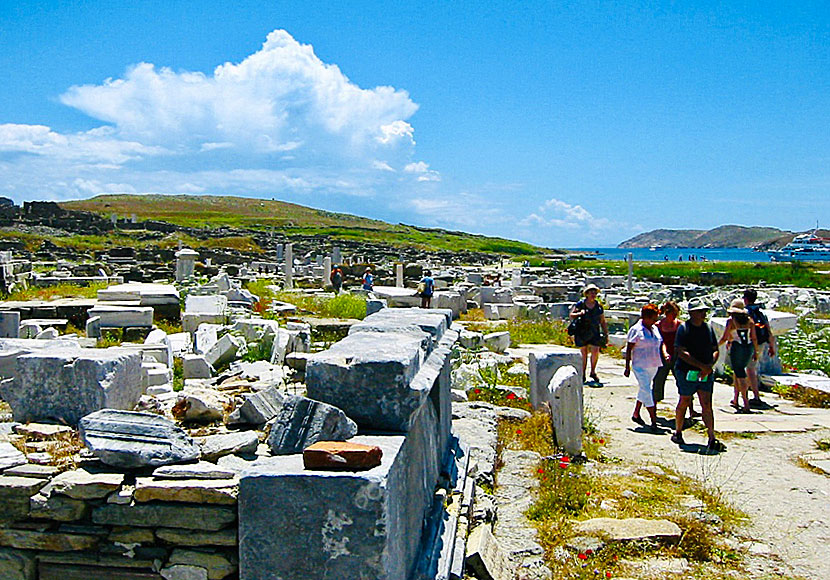
 |
| ISLANDS A-Z | CRETE | CYCLADES | DODECANESE | EASTERN AEGEAN |
| IONIAN | SARONIC | SPORADES | MAINLAND | ABOUT US |
Delos in Greece |
|
Delos lies just west of Mykonos, and according to mythology, Apollo was born here. The island was inhabited as early as from the 3rd millennium BC. But its first heyday was during the archaic period from 7th century BC to the middle of the 5th century BC when most circled around Apollo's sanctuary, which was the principal during this time.
Delos close to Mykonos.
Every four years, Apollo was honoured with a sort of Olympic Games, which included for example, sports and music competitions as well as dance and theatre. During Roman times there lived as most 25 000 people here. The port was one of the Mediterranean's busiest, and there was brisk trade in corn and slaves.
Temples and statues near the port of Delos.
Delos and the famous phallus statues.
Some of the other phallus statues on Delos. |
|
The first archaeologists came to Delos in 1872 and since then the island has been a large archaeological excavation. Today, Delos is uninhabited except for a few excavating archaeologists. Are you the least bit interested in history and culture you should visit Delos.
The famous lions are now in the Museum of Delos.
Perhaps the most famous remains are the proud lions that used to stand at the procession road. The lions are now replaced with copies; the originals are in the museum on Delos. Many of the temples and houses are in ruins, but you still get a pretty clear picture of the area.
The interesting museum on Delos.
TRAVEL TO DELOSThe boats to Delos start out from the small port in Mykonos town. To walk around by yourself on the sight is quite wasted unless you are very familiar with the subject. To understand what is seen, it is best to take a guided tour, it takes about an hour and does not cost much extra.
Two giant torsos on Delos.
ACCOMMODATION ON DELOSThere are no people living on Delos and you can not stay overnight. The only people who are allowed to stay overnight are the archaeologists working on Delos. So you want to stay overnight, you must train to be an archaeologist. :-)

The excavation area is huge. The island's surface is 3.6 km2 and the highest peak is 112 meters high.
To explore Delos without a guide is quite useless. Book tours from Mykonos, or from Paros and Naxos. |
HOME |
ABOUT US |
SEARCH |
BOOK HOTEL |
GREEK ISLANDS |
SWEDISH
|
|
© 2007-2026 | Janne Eklund | Kalispera and Kalimera. |